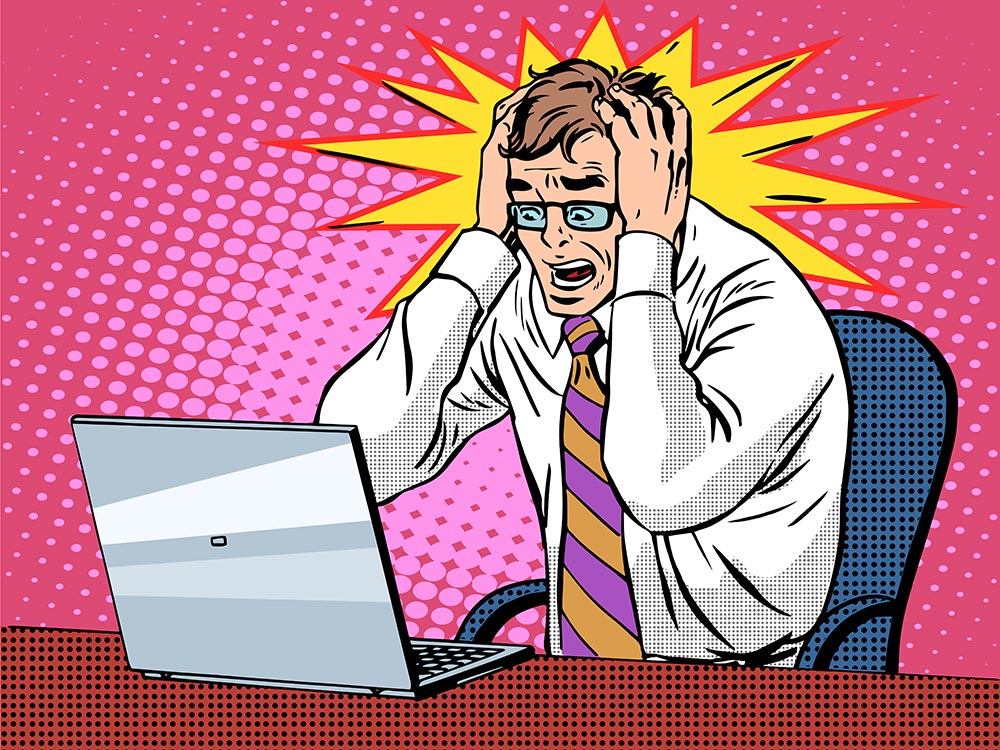Article Highlights:
- For at least 160 years, economic panics started with problems at a single firm.
- Today, Deutsche Bank is on deathwatch.
- The last time the Fed panicked, in 2008, the S&P 500 Index plunged almost 50%.
Federal Reserve Chairman Jerome Powell confirmed market expectations last week. He said the Fed would “act as appropriate” to sustain the current economic expansion.
Powell also said: “Crosscurrents, such as trade tensions and concerns about global growth, have been weighing on economic activity and the outlook.”
He also noted that business investment slowed “notably.” This is important because business investment creates jobs for the long run.
Somehow, these comments reassured traders. They believe the Fed will cut interest rates later this month.
That’s a normal response to a slowing economy. Lower rates reduce the costs of business investments.
That should boost growth now and in the long run. This is bullish for the stock market.
But lower rates are also a sign of trouble.
The Fed only cuts rates when it’s worried. How fast the Fed cuts shows how worried it is.
The Fed lowers rates sharply when it panics. And there are reasons to start watching for a Fed panic.
Watching for a Fed Panic
Right now, the Fed is worried. We know that because Powell confirmed a rate cut is on deck. We also know the Fed is worried because of the news.
For at least 160 years, economic panics started with problems at a single firm.
In 1857, the collapse of the Ohio Life Insurance and Trust Company sparked a global financial crisis.
The most recent one is the collapse of Bear Stearns in 2008. That signaled problems two months before the bear market. The S&P 500 Index dropped 52% after this signal.
History shows dozens of examples. So, it’s worth watching for a Fed panic.
And today, Deutsche Bank is on deathwatch.
Deutsche Bank Is a Big Problem
Like Bear Stearns, Deutsche Bank is a relatively small company with connections threatening the stability of the global financial system.
Deutsche Bank’s risks are especially large in derivatives. It shows about $40 trillion worth of derivatives on its books.
Now, that doesn’t mean Deutsche Bank can lose $40 trillion. Derivatives are complex, and many firms hedge positions.
Based on an analysis by authorities that regulate derivatives, the worst-case losses are probably about $16 billion. That’s 27 times as much as the bank has in reserve for losses.
This is a market where legendary investor Warren Buffett’s warning applies: “You only find out who is swimming naked when the tide goes out.”
How to Know If Deutsche Bank Threatens the Global Financial System
In the past, central banks panicked when facing threats like this.
When central bankers get scared, they cut rates aggressively. To quantify this, the chart below shows the change in interest rates on three-month Treasury bills.
The interest rate is the blue line. The black line is the S&P 500. At the bottom is the 65-day rate of change (ROC).
When the ROC falls to -40%, the Fed is panicking. In 2008, the panic stage started on a holiday.
The Fed held an emergency session on Martin Luther King Jr. Day. Then it announced a 0.75% rate cut. Usually the Fed moves rates by 0.25%.
The fact it acted on a holiday was a sign of panic. The fact the cut was three times larger than normal was a sign of panic. Plus, the ROC signaled panic.
Despite the warnings, many investors ignored the Fed’s panic. A little more than a year later, the S&P 500 was down almost 50%.
There was ample time to avoid losses. But many investors ignored the Fed.
When the Fed Is Scared, You Should Be Too
This same signal occurred in 2001. It’s a rare signal. But it’s one that investors should watch now that large firms can implode.
You can follow this indicator free at sites such as StockCharts.com. The symbol for the 3-Month U.S. Treasury Yield Index is $IRX.
Adding the ROC to this index requires just a few clicks. Simply select “Rate of Change (ROC)” from the Indicators dropdown menu and click the Update button.
In this environment, it’s likely the Fed will panic. Whenever it cuts rates, check the ROC to see how scared it is.
When the Fed is scared, you should be scared too. That’s when it’s time to cut back on stocks.
Regards,
Michael Carr, CMT, CFTe
Editor, Peak Velocity Trader
